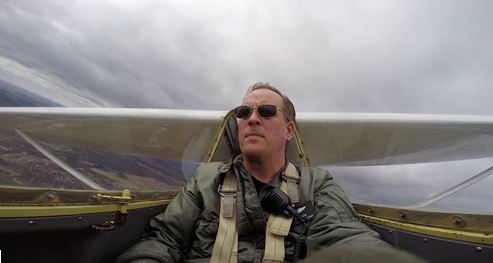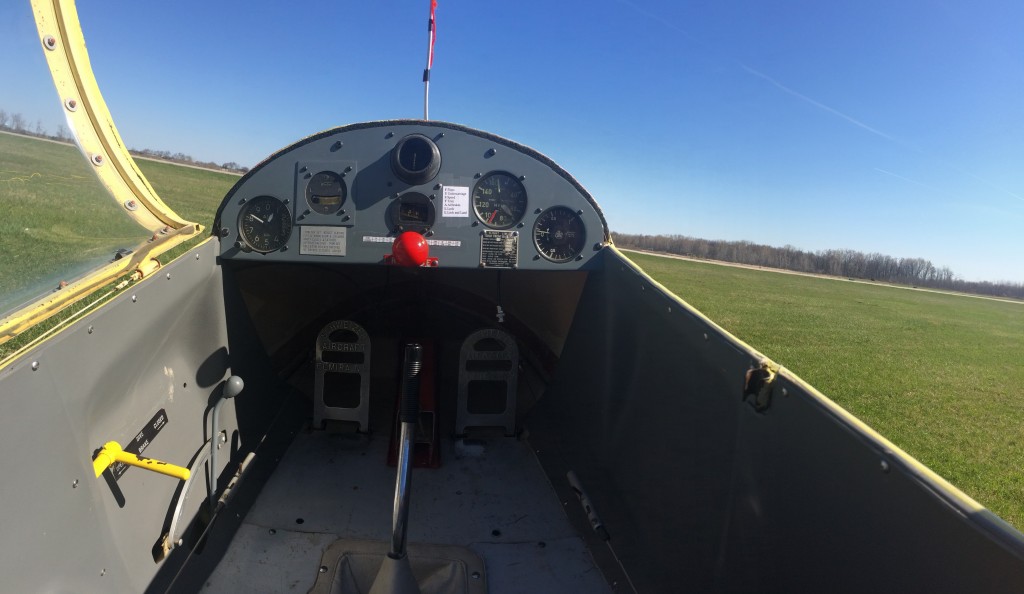Here’s a brief report on the CFI training front. As you might know, it’s pretty much impossible to get an initial CFI-G checkride in self-launch. So I’ve switched gears and I’m training for the rating in aerotow.
I have an aerotow endorsement and about 30 flights using that launch method. I’ve trained in the L-23 Super Blanik (TG-10B Merlin), the Schweizer 2-32, and the Schleicher ASK 21, with miscellaneous flights in other gliders. But let’s be honest: I need to train seriously in a particular ship in a particular environment to dial in my skills before presuming to go after a CFI ride.
CAP training in the ASK 21 was great and I’m grateful to my CAP colleagues for the training that I got to do over the winter in the ASK 21. But there’s a lot of demand for glider ops – both cadet orientation flights and senior-member training. No way to really get the number and frequency of operations that I think I need to get proficient this spring. So I’m trying a commercial operation, namely Benz Aviation at Ionia County Airport (KY70). (Yes, there’s a “K” in the identifier. It has AWOS-3 weather on the field. I presume that it will switch over to an all-alphabetical identifier soon.)
I headed to Ionia Monday and Tuesday for indoc in the mighty Schweizer 2-33A. The glider training fleet is much more varied than the airplane training fleet, and the 2-33A is as close to a “C-172 of gliders” as one could hope to find. From its introduction in 1945 until the late 1980s, the 2-33 was the main training glider used in North America. The 2-33A is simply the 2-33 with a different rudder that provides more authority.
Over two days, I logged seven flights for a total of 1.7 hours aloft. Six normal flights and one 180 abort from 250 AGL. All basic maneuvers except slips, no-spoiler landings, and slack line, which are coming up next week. All unassisted launches (just to remind you of where the stops are on the controls as the tow initiates). All front-seat ops until I get a good command of the aircraft and transition to the back seat. All flights were mid-day with some good bumps to challenge my stationkeeping on tow. Not enough to get slack line, but interesting excursions.
The stick range of motion is lots greater than other ships I’ve flown, although consistent with the 2-32. I’m always surprised by how far forward the stick has to be on takeoff, even with the trim full nose-down. I’m used to keeping my forearm on my leg. Not so in the 2-33A.
I found lift on the first day, despite a 3,500-foot overcast and temps in the 40s. The next day, with clear skies, I had very little lift and had to fly a lower (although in-parameter) pattern to return on the first flight. Probably my fault for taking so long to box, making the tow plane fly further from the airport without turning, and I mis-evaluated the final glide by assuming less sink that we experienced.
The 2-33A is a draggy beast, at least compared to the L-23 and the ASK 21. Coordination is essential. Control inputs take awhile to have effect, so you’re anticipating the other two axes whenever you make an input in one. This really shows in slow flight. I’ stirring the coffee a lot, mainly because I need to develop the muscle and inertial memory that will put me in the groove and help me to be quieter on the controls.
The biggest issue so far is coming back up through the wake at the end of the box. I need to get up more smartly. I got stuck in the wake a couple of times with interesting effects. And to think that guys out west actually get towed through rotors. Wow. I also need to get more precise with slow flight. I stalled each direction and I’m still chasing needles instead of listening for the airflow.
The most pleasant surprise was landings. I’ve been sweating the precision landings for awhile, but the aero-tow experience on grass is showing me that there’s less to worry about. Being on grass and having a front skid is going to make the precision landing and simulated forced landing much more doable than I thought. I touched down and stopped within a 400-foot zone all but one time and mostly ended up within the same 50-foot zone. Even on the 180 abort. Aero-tow folks care about this more than most because the tow pilot and ground crew prefer it if you start and finish at a particular spot.
Runway 36 has deeper grass and those landings were akin to a forced landing in a jungle. The bird went right on the skid upon touchdown and stopped smartly. It’s less of a thing on Runway 27, but I suspect that 36 will get slicker when it dries out later in the spring and when they cut it more frequently. I think I actually prefer the shaggy grass. You only have to worry about the touchdown and the grass takes care of your roll.
Lee Larder, my IP, said that, if I was a commercial candidate, he’d likely turn me loose next week. I think that’s good. I’m keeping him in the cockpit full-time, though, because I’ll need the weight in the front and because I want to critique every maneuver, even if I get good enough that it’s boring.
I’m heading back Thursday and Friday of next week. I’m hoping that a checkride in May – or early June at the latest – is a possibility.


